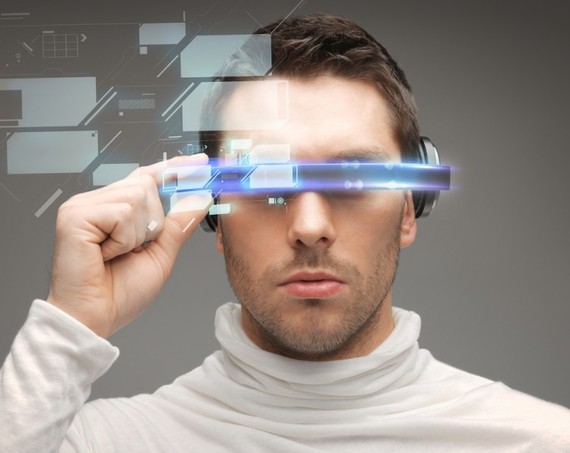- January 21, 2016
- in Green Tips
- by marcos
- 729
- 0

In medicine, we don’t tell you what is about to happen because we don’t know. We react to illness and injury. We make diagnoses of diseases after they affect you, and treat injuries after you suffer from them.
But what if a significant portion of our work was focused on testing you before you got sick or injured? We might develop exquisite predictive tools and great preventive treatments. All of medicine — and life – -would be changed. It would be called health care — not the disease care we currently practice. Here’s how it is going to work, in four of its early stages.
1. Predictive proteins: Many diseases and most cancers release identifying proteins prior to the disease becoming clinically recognizable. [1] They have to start somewhere — and they all start small. A number of companies are developing tests for these biomarker proteins. What we don’t know is, how often does your body kill off the cancer (or ward off a cold) before the symptoms hit you? What we do know is that one day, when you and your doctor are alerted to the possible coming storm, you will take preventive action. This will usher in a whole new era in which we can define which disease precursors need to be addressed, and eliminating diseases before they eliminate us.
2. Predictive errors: Many sports injuries and work-related traumas start with mental errors. A momentary loss of focus, a “mental error,” a poor decision; all can be precursors to the injury. But focus and attention to detail are now measurable, both by brain wave recordings and eye motions.[2] The quantified health devices of today will morph into tomorrow’s skin patches and eyeglasses–wearables that won’t merely record data but intervene, much as a pacemaker does for the heart. You will thus be warned of an upcoming error–though whether or not you choose to heed the warning may or may not be up to you.
For serious athletes, the interfaces will be even more sophisticated. Coaches will store your propensity data, monitoring your response and timing in a vast array of possible sports encounters. Wearing a virtual reality headset before you play you will train while visualizing these various scenarios, improving your performance while lowering injury rates.
3. Arthritis: While cancer kills many people, arthritis can ruin a lot of lives. The markers for arthritis exist within the joints and within your genes. [3] The tools for measuring these markers are currently needle aspiration, x-rays, MRIs and genetic sequencing. Before injuries occur, the genetic markers reveal propensities to develop arthritis. Choosing jobs and sports that diminish impact will be wise for an arthritis candidate. After injuries occur, but well before arthritis sets in, replacing the damaged tissues (missing meniscus cartilage in the knee, for example), or re-growing the articular cartilage, will stop the disease’s progression. [4] The key is intervention, either at the time of injury or even before, using biologic joint replacement therapies.
4. Aging: Much of aging is self-induced disease. Yes, the clock goes by; but how healthy, fit and calm we are helps determine how old we look and feel. [5] While the mirror and the staircase may have warned us in the past, the newly ubiquitous “Internet of Things” will take over, reminding us how often we have opened the refrigerator door and what we’ve ingested.
More than just how many steps we took today, the next FitBits will record, balance, coordination, strength, agility and flexibility, along with other markers of fitness. The levels of smoke and air pollutants we inhale will trigger changes in the air quality in our homes and cars, ramping up filtering systems and providing fresher air. Our daily Aging Impact Scores will be totaled, reported and adjusted.
Our stress levels, excitement and depression stages will be predicted by a cocktail of blood tests, brain wave recordings and our activity on social media. Interventions — actions suggested to change your destructive path — will occur about as often as they do today, when we reach for one of our mood lifters — be it a cup of coffee, or a chocolate bar.
The odd thing is that many of these physical and emotional states are already predictable. But too few of us heed their warnings. As often as we look at our smart phones, we may as well get some benefit from them. They will ultimately tell us a great deal about ourselves, not just about everyone else.
_________
1. Tso, A. W., Xu, A., Sham, P. C., Wat, N. M., Wang, Y., Fong, C. H., … & Lam, K. S. (2007). Serum Adipocyte Fatty Acid-Binding Protein as a New Biomarker Predicting the Development of Type 2 Diabetes A 10-year prospective study in a Chinese cohort. Diabetes Care, 30(10), 2667-2672.
2. Näätänen, R. (1992). Attention and brain function. Psychology Press.
3. Scher, D. M., Stolerman, E. S., & Di Cesare, P. E. (1996). Biologic markers of arthritis. American journal of orthopedics (Belle Mead, NJ), 25(4), 263-272.
4. Jay, G. D., Fleming, B. C., Watkins, B. A., McHugh, K. A., Anderson, S. C., Zhang, L. X., … & Elsaid, K. A. (2010). Prevention of cartilage degeneration and restoration of chondroprotection by lubricin tribosupplementation in the rat following anterior cruciate ligament transection. Arthritis & Rheumatism, 62(8), 2382-2391.
5. Kramarow, E., Lentzner, H., Rooks, R., Weeks, J., & Saydah, S. (1999). Health, United States, 1999 with health and aging chartbook. Hyattsville (MD): National Center for Health Statistics.
— This feed and its contents are the property of The Huffington Post, and use is subject to our terms. It may be used for personal consumption, but may not be distributed on a website.


